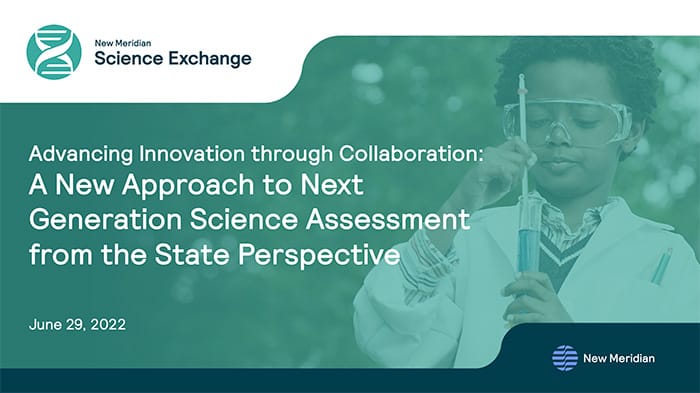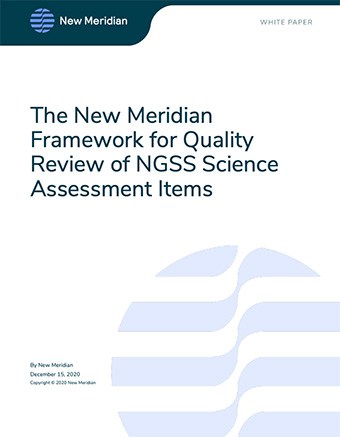
Next-Generation Science Education Requires Balanced Assessment
As American school systems rethink assessment, it is worth considering how we track and test science education.
Recognizing the increasing importance of science in today’s world, most states embraced Next Generation Science Standards (NGSS) or some equivalent, implementing new curriculum and professional development programs within the last decade. Yet assessment, a critical piece of those systems, has not been reevaluated in a similar fashion. For every state that has implemented a next-generation assessment, many more have not.
As we redesign assessment for science in the coming years, it is worth remembering an important lesson: assessment for the sake of assessment is not helping educators teach, nor is it helping students learn. Instead, assessment should be a tool to provide meaningful support to the classroom—something that is done for students, rather than to them. A high-quality assessment system allows students to practice the investigative, critical thinking and problem-solving skills that spark curiosity and prepare them to succeed in today’s complex, knowledge-based economy. This is especially important when considering the three-dimensional nature of NGSS.
Three-Dimensional Assessment
Next Generation Science Standards, created by a consortium of states to ensure that quality science education is delivered, are based on three-dimensional learning, or simply 3D learning. This refers to the three educational pillars that underpin the NGSS:
- Science and Engineering Practices. These are the activities that scientists and engineers do to solve real-word problems, such as asking questions, analyzing data and creating models.
- Disciplinary Core Ideas. This is the scientific content learned in all branches of science.
- Crosscutting Concepts. These are ideas that apply across all of science, such as the relationships between cause and effect, structure and function, or matter and energy.
Students develop their skills in each of these dimensions as they move throughout the year. A balanced assessment system of summative and lesson-aligned assessments can aid teaching and learning by providing valuable information at critical times during this journey.
For example, assessments can be deployed at the end of a unit that can show where students stand in their understanding of the three dimensions. These can be administered at any point throughout the year, presenting timely data to teachers that is directly tied to the curriculum. These assessments can provide data that teachers use to inform specific strategies that adapt their instruction and address common student preconceptions in science. By providing actionable information throughout the year, teachers can course-correct based on real-time information about student performance.
Summative data is also important. Assessments that guide policy decisions and provide a large-scale view of how effectively standards are being implemented will always have value. American school systems need this data to allocate resources, to direct support and to ensure equity. Together, summative and more frequent lesson-aligned assessment data can provide a complete picture of student performance. To live up to our potential in science education, we need to embrace a balanced assessment system.
A Time to Innovate
At New Meridian, we have made science assessment a particular focus while continuing to explore a balanced approach.
Two years ago the New Meridian Science Exchange was launched. The Science Exchange provides states with simple and cost-effective access to high-quality assessment items aligned to Next Generation Science Standards. The Exchange gives states flexible options such as drawing from a bank of test items to create NGSS-aligned assessments or contributing items to the bank to garner licensing revenue. The result is a secure item bank and an effective system that provides the quickest way for states to enhance their science assessment.
New Meridian also released the New Meridian Framework for Quality Review of NGSS Science Assessment Items that states can use to review and evaluate test items for science assessments. This universal framework, foundationally built upon well-known industry research, outlines how to evaluate science assessment content while placing emphasis on items that promote equity and inclusion.
As we continue to innovate, it is important to evolve our thinking about how we view assessment systems, for science and every subject. Assessment should never be seen as a punitive exercise. Instead, assessment should be directly connected to student learning. A balanced approach in science and elsewhere can lift up students, teachers, parents, administrators and officials working at every level of our education system. We need balanced assessment to move our schools forward.

Christopher Lazzaro, along with a panel of experts, will speak on this innovative approach to high-quality science assessment that raises quality and delivers value at the National Conference on Student Assessment (NCSA) in June.
View the NCSA program to learn more about Lazzaro’s June 29th session, titled Advancing Innovation through Collaboration: A New Approach to Next Generation Science Assessment from the State Perspective.



